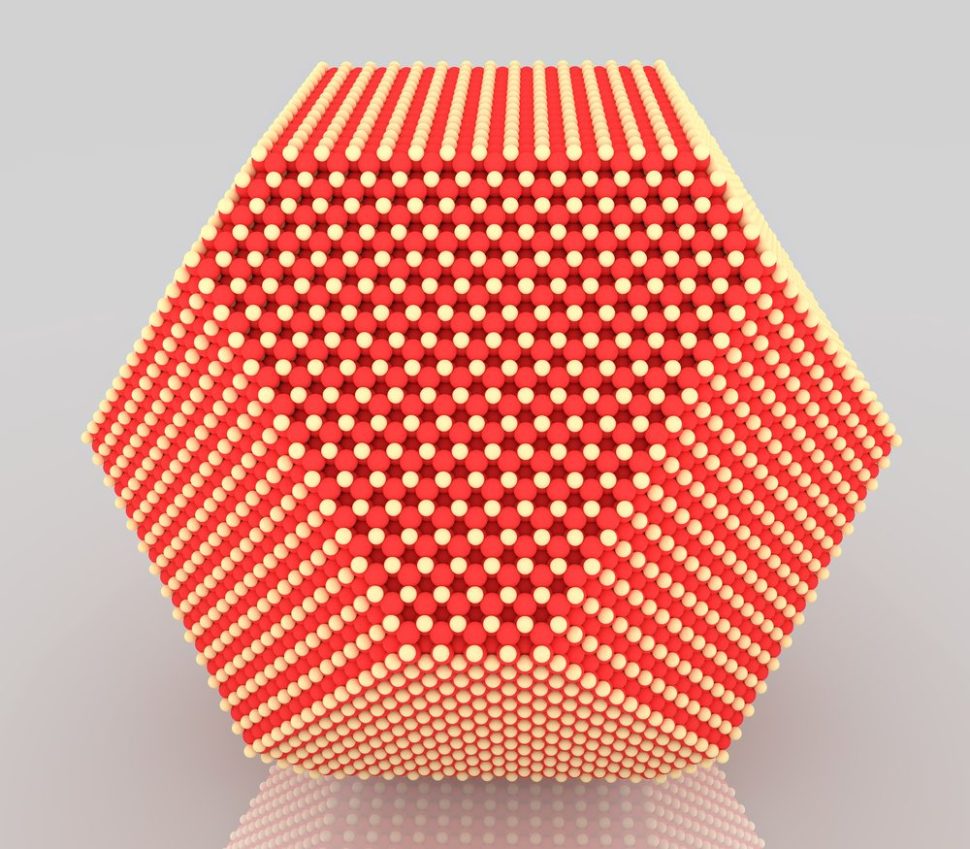Formerly the Stanford Linear Accelerator Center, the SLAC National Accelerator Laboratory is a U.S. Department of Energy research center operated by Stanford University.
Recognized four times by a Nobel Prize, SLAC conducts hundreds of in-depth research projects each year in various fields from healthcare, to material science and clean energies.
And here’s an interesting tidbit: SLAC’s website, created in 1991, was the first website ever launched in the United States.
Artificial Atoms Spontaneously Self-Assemble Into Complex Nanostructures
Nanocrystals, also referred to as “artificial atoms”, are, as the name suggests, tiny particles that have at least one dimension less than 100 nm.
Semi-conductive nanocrystals with dimensions of less than 10 nanometers are also called quantum dots.
In yet another serendipitous discovery, researchers from SLAC and Stanford University, while studying nanocrystals, observed that, under the right conditions, they can arrange themselves into more complex nanostructures.
Researchers were working on palladium nanocrystals to exhibit their catalytic properties. They shined an X-ray beam through the nanocrystals, heating them to 230 degrees Celsius.
Using SLAC’s Stanford Synchrotron Radiation Lightsource (simply put, a powerful source of X-rays), researchers observed in real-time how the “artificial atoms” self-assemble into what’s called “superlattices” in a matter of seconds.
Now, that wasn’t exactly what scientists were expecting.
Superlattices have been created in labs for years, at low temperatures, in a process that takes days. In this case, the accidental overheating of nanocrystals triggered their spontaneous self-assembly process.
According to the SLAC team, who published a paper in Nature describing their findings, these nanostructures or superlattices can be the building blocks of a flurry of novel materials with varied applications.
Materials Science Backing up Industry 4.0: New Materials for a new World
SLAC researchers hope these new insights would help them fine-tune and adapt the self-assembly process of nanocrystals to coax them into forming novel materials.
Obviously, scientists have a lot of experimentation to do to find out which conditions favor which properties and shapes.
New materials with specific properties would find applications in, for example, energy (solar cells), chemistry (catalysts), optoelectronics (devices that interact with light), and magnetic data storage.
The factories of tomorrow will rely on smart innovative production models that are versatile and efficient, all while being environment-friendly and consuming less energy. Each of these conditions is a puzzle piece that will need new materials to, well, materialize.
In addition to new technologies, such as automation, the Internet of Things, and 3D printing, new materials are a major ingredient for the success of Industry 4.0.



















Is there already multidimensional computing in operation? As I know, present computers do it one-dimensionally. Supercomputers may have many cores, but still the parallel processes are more or less one-dimensional? This is the same with quantum computers. They may be absolute fast, but somehow uncomplicated.
Wouldn’t the most interesting testing use for this kind of nanocrystals be an artificial brain? A rudimentary AI would run an endless process giving these self-organizing crystals various recipes, testing results and giving the best findings to researchers. With two- or three-dimensional processing singularity might become reality.
Maybe you mean this? https://en.wikipedia.org/wiki/Ternary_computer
And of course, there’s quantum computers and the qubit.
Thanks for your reply. Not exactly, perhaps I was expecting too much. Some days ago I saw a Werner Herzog film Lo and Behold (2016). One interesting thing was an idea about the alphabet of human thoughts. If people are reading or thinking for example two walking elephants, their neuroimages are similar despite of language or culture. Whether those images are stand-alone or built by brain, I don’t know. I was thinking if computers could handle similar concepts.
After googling “multidimensional computing” I received mostly material about calculations with many dimensions, databases etc. Some articles gave the impression that some computers might operate directly with 2D or 3D patterns. Maybe I understood wrong and all computers, including ternary, optical and quantum, always calculate the results.